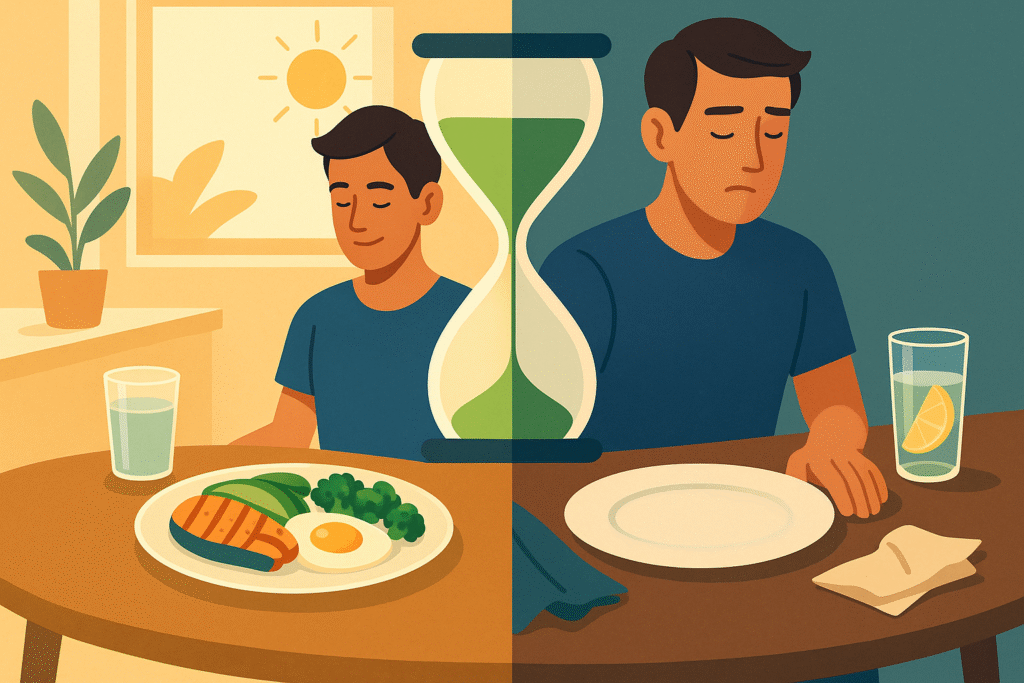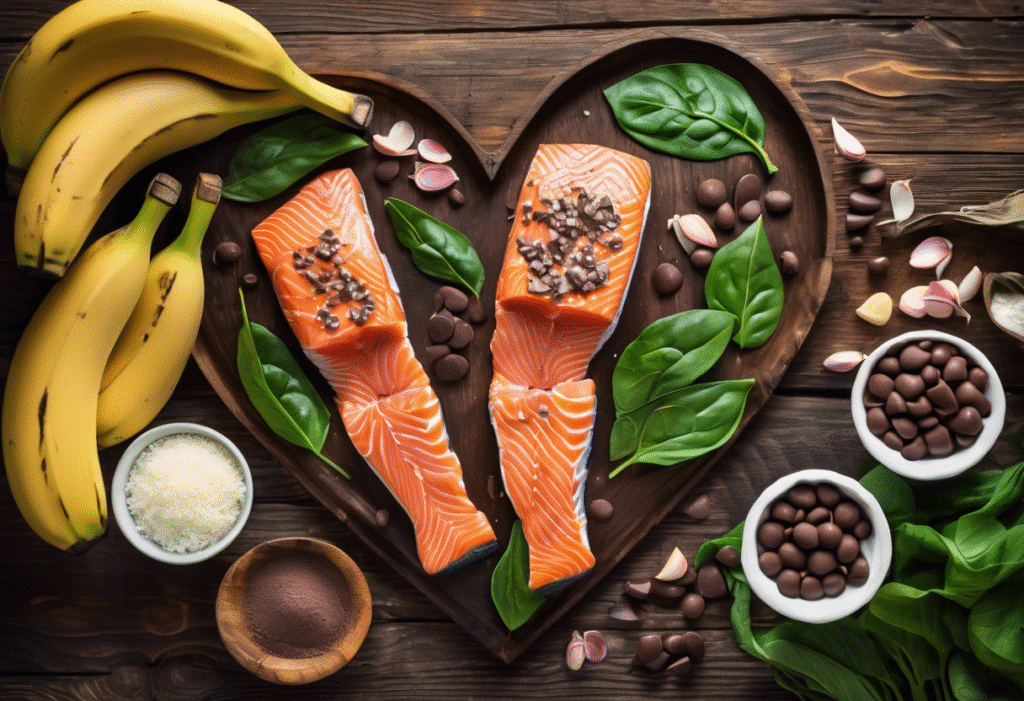Let me paint you a picture: It’s 11:37 AM on a Tuesday, and my stomach is growling so loudly my coworker turns to ask if I’m “okay.” I’m on hour 14 of my intermittent fast, riding that shaky line between “mental clarity” and “might bite someone for a granola bar.” Three years ago, I bought into the Instagram version of intermittent fasting – the before-and-after photos, the promises of effortless weight loss, the #fastingforfocus hashtags. What no one showed me was the 3 PM energy crashes, the social awkwardness, or the nights I caved and ate an entire pizza at midnight.
After 1,095 days of experimenting (and failing, and trying again), I’m here to tell you the real story about intermittent fasting. Not the sanitized influencer version, but the messy, complicated, sometimes-life-changing truth. If you’re looking for a quick “do this, lose weight” guide, this isn’t it. But if you want to understand what fasting actually does to your body, when it works (and when it backfires), and how to make it sustainable – keep reading.
A Quick Note: If you’re ready to start fasting the right way after reading this, I’ve created a science-backed intermittent fasting plan that includes all the mistakes I made (so you don’t have to). It’s not just what to do, but how to adjust it for your lifestyle.
Why I Stuck With Fasting (Despite Nearly Quitting 12 Times)
My fasting journey began when my doctor casually mentioned my blood sugar was creeping into prediabetic range. “You might want to try intermittent fasting,” he said, as if suggesting I drink more water. That same week, my coworker Rachel (who’d recently transformed her body) gushed about how fasting gave her “so much energy.”
So I dove in headfirst with a 16:8 plan. The first week was brutal:
- Day 1: Felt smug until 10 AM when I nearly cried over someone’s microwave popcorn
- Day 3: Got lightheaded during a meeting and had to pretend I was “just thinking deeply”
- Day 5: Ate so much at my “feeding window” I had to unbutton my pants
But then, around week three, something shifted. I woke up before my alarm. My mid-afternoon energy crashes disappeared. My skin cleared up in a way no expensive serum had achieved. Most surprisingly? I stopped obsessing over food.
That’s when I realized: Fasting isn’t about weight loss. It’s about resetting your relationship with hunger.
The Fasting Timeline: What No One Explains About Those “Magic Hours”
Every fasting guide talks about “16 hours to enter ketosis” like it’s some universal switch. After tracking my glucose and ketones daily, I learned the truth: Your body doesn’t read the rulebook.
Here’s what actually happens hour by hour:
0-12 Hours: The “This Isn’t Even Fasting” Phase
Your body is still digesting last night’s meal. If you eat dinner at 7 PM and breakfast at 7 AM, you’re not “fasting” – you’re just following a normal eating rhythm.
12-14 Hours: The Hunger Storm
This is where most people quit. Around hour 13 (11:37 AM for me, like clockwork), ghrelin – your hunger hormone – spikes dramatically. But here’s the secret: This wave passes in 20 minutes if you wait it out. I keep sparkling water with lime at my desk for these moments. The bubbles create stomach volume, and the sour taste suppresses hunger.
14-16 Hours: The Golden Window
For me, this is when the magic happens. Mental clarity sharpens as your brain starts using ketones for fuel. One study found problem-solving abilities improve by 15% in this state. I schedule all my creative work for this window – it’s like my brain gets an upgrade.
16+ Hours: Proceed With Caution
Some people thrive on 18+ hour fasts. I am not one of them. Past hour 16, my hands get cold, my mood plummets, and I become that person who snaps at baristas. Through trial and error, I learned my sweet spot is 14-15 hours – long enough for benefits, short enough to stay human.
The Unexpected Perks (That Have Nothing to Do With Your Waistline)
While everyone obsesses over weight loss, these unexpected benefits kept me fasting long-term:
1. Your Gut Gets a Vacation
After years of bloating and indigestion, fasting gave my digestive system something it never had before: a break. Research shows even short fasts:
- Reduce intestinal inflammation
- Strengthen the gut lining (bye-bye, “leaky gut” symptoms)
- Resets your microbiome balance
2. The Time and Money You’ll Save
No one talks about the practical wins:
- $2,500+/year saved by skipping breakfast ($7/day x 365)
- 45 extra minutes each morning (previously spent cooking/eating/cleaning)
- Simplified grocery shopping (fewer meals to plan = less decision fatigue)
I reinvest that time into a morning walk and that money into better quality dinners.
3. The Emotional Freedom
The most surprising benefit? Breaking the “I must eat every 3 hours” mentality. Now when meetings run late, I don’t panic. When the airport has no “healthy options,” I’m fine waiting. This psychological shift is worth more than any number on the scale.
The Social Toll They Don’t Warn You About
Remember how I mentioned brunch becoming awkward? That was just the tip of the iceberg. Here’s what fasting really does to your social life:
The Coffee Meeting Problem
- Scenario: Your team gathers at the café at 10AM during your fasting window
- What happens: You nurse black coffee while smelling everyone’s avocado toast
- The fix: Schedule meetings post-12PM or own it with “I eat later” (no explanations needed)
Dating While Fasting
- Reality: Dinner dates are easy, but breakfast dates? Forget it
- My workaround: Suggest brunch at places with great coffee (my treat) during my fasting window
Family Dinners
- The struggle: Grandma thinks you’re starving yourself
- Solution: I break fast early on Sundays – family harmony matters more than perfect timing
When Fasting Does More Harm Than Good
Through painful experience (mine and others’), we identified who should reconsider:
1. The Stressed-Out Executive
- My friend Dave (60-hour work weeks) developed shingles after 3 months of strict 18:6
- Why: Chronic stress + fasting = cortisol overload
- Better approach: Start with 12-hour overnight fasts only
2. The New Mom
- My sister’s milk supply dropped dramatically when she tried IF postpartum
- Doctor’s orders: “Eat when the baby eats” for first year
3. The Endurance Athlete
- My cycling buddy bonked hard during races until he switched to 14:10 with carb-loading
- Key adjustment: Always break fast 2 hours before intense training
My Current (Sustainable) Routine
After all the trial and error, here’s what actually works in real life:
The Flexible 5-2-0 Method
- 5 days: Clean 16:8 (noon-8PM eating)
- 2 days: Social flex (may eat earlier/later)
- 0 guilt: Because life happens
The Break-Fast Trio
- First bite: Protein (2 eggs or Greek yogurt)
- Second bite: Healthy fat (avocado or nuts)
- Third bite: Everything else
The Travel Exception
- Airport/flying days = automatic flex days
- Why: Dehydration + fasting = guaranteed headache
Final Reality Check
The scale might show results, but ask yourself:
- Are you constantly thinking about food?
- Do you cancel plans to keep your fasting window?
- Are energy swings affecting your work?
If yes, it’s time to adjust. The perfect fast is the one that makes you feel good, not just look good on paper.
Ready to Start Smart? Here’s that science-backed fasting plan again – now with 3 different schedules for different lifestyles.Would you like me to adjust any elements to better match your voice? I can tweak specific sections to align more closely with your style preferences.


I have started, paused and stopped Intermittent Fasting a lot of times. Got motivated from this, will start again.